The Best Way To Film Underwater
The Best Way To Film Underwater
Abbie Fish of Ritter Sports Performances discusses the necessary tools and filming equipment, such as the GoPro, to film underwater in swimming.

One of the best ways to receive technical feedback is through video analysis. Have you ever wondered what is the best angle to film a swimmer from? How deep you should put your camera? Where should the swimmer be in the frame? In our next series, we can plan to cover what is best way to film your strokes underwater.
Let's get started.
2.) Kinesthetic
3.) Auditory
Some teachers even include an additional type called readers/writers. With that being said, swim coaches have a tendency to include kinesthetic, auditory, and readers/writers within their regular workouts -- but what about the visual learners?
Did you know that visual learners make up 65 percent of our population -- they are the most common subgroup of learners out there. What do you do to benefit your visual learners at swim practice?
That's exactly where video analysis comes in.
Within the past decade, underwater cameras have become more and more available to the masses. With prices dropping and camera quality increasing, getting a decent underwater camera won't break your budget. We owe a special thanks to GoPro for completely revamping the "action sports camera" and pushing other competitors to compete with their quality and prices. Now you can buy a decent underwater camera for about $200.
With that being said, here are eight questions each coach (or swimmer) should ask themselves before purchasing their first underwater camera:
How much are you willing to spend on a camera? Do you want insurance? Most cameras don't come with all the attachments needed to film or mount to the pool wall -- are you OK with buying those additional accessories?
A $199 price tag sounds great, but when you add in insurance, mounts, attachments, filters, and more -- the price can easily triple before you know it.
Do you swim indoors? If so, how is the lighting? Do you need an additional light to help brighten the images? If you film outdoors, be sure to pay attention to sun glare and the temperature threshold of your camera.
Also, if you are using a public facility make sure to ask whether it is OK for you to film. There may be a set time outside of lap swim hours that is more preferred by management.
Be sure to take note of your pool walls and gutter system as this can affect what additional attachments and accessories you may need for your camera or the person filming.
Do you plan on filming everyday at workouts or every few months? Be sure to look at the camera's battery life and recharging time before purchase. Also, take note of whether your camera includes an SD memory card or if you would need a bigger SD card for your team's filming needs.
Your team and group size should be considered, along with how many strokes you plan on filming during each session. A rotating and consistent schedule with filming will allow you to get all of your swimmer's strokes without filling up your entire SD card or running out of battery life.
Consider buying a 32GB or larger SD card. This will allow you to record 3-4 hours of video at a time, as opposed to 1-2 hours with a standard 16GB SD card.
Make sure to look at weight of your camera and all the potential attachments. Some may be easier to travel with than others. Consider size, weight, attachments needed, and ease of portability before purchasing.
Do you plan on immediately playing back your video on an Apple TV or smart TV -- if so, make sure to find a camera is Wi-Fi compatible. Some cameras even have their own apps now, for easy connection and playback.
Including a viewfinder (or screen) is totally up to you. It definitely makes for easier setup and change of your camera's location -- but this upgrade will definitely add some extra $$$ to your price tag.
Consider getting a camera without a screen and figuring out the depth and angle needed for the proper view of your swimmer. After all, the pool your team trains in daily won't ever change in size or shape.
Words from the wise -- if you plan on slowing down your video for technique analysis. Make sure your camera has a resolution rate equal to or higher than 720p. Also, the camera can shoot in 60 frames per second or more. This will keep the video from being greatly distorted when slowed down to slow motion.
Just like GoPro models 1-4, most underwater cameras are not waterproof on their own. Underwater camera housing can become costly based on your camera of choice, so make sure you take that into consideration before purchasing it.
Be sure to answer each of these proposed questions before purchasing your first underwater camera. Everybody's pool is set up differently and your camera must meet the needs of its environment as well as your team's.
A cost-conscious, easy-to-use underwater camera for stroke analysis is the original GoPro Hero Session. This camera is unique due to its small square size, one-touch controllability, and the fact it's WATERPROOF without a case.
The GoPro Hero Session will only set you back $199 bucks and has similar recording qualities of the GoPro Hero 3 without the price tag. The GoPro Hero Session can record up to 100fps with a resolution up to 1440 pixels. The downside to this camera is it does not include a screen, but it is Wi-Fi compatible.
GoPro has a great, free app called Capture, which you can download to either an iPhone or Android. You can immediately play back videos that were just recorded through its Wi-Fi connection -- as long as the camera is not submerged underwater.
From there, all you need is a simple suction cup attachment to mount your GoPro Hero Session to the pool wall and boom -- record away. This entire package will only cost you roughly ~$250 (depending on your SD card size).
Be sure to stay tuned in for next week when we will discuss specific angles and cool additional attachments you may want to use to help enhance your video feedback.
It is time we start accommodating the visual learners in the world. After all, they make up the majority of our population.
---
Have footage of your swimmers but no the time to devote to analyzing it? Let me help you. After all, we can't add additional hours into the day, and I know what a swim coaching schedule is like.
I can take your already filmed clips and analyze them (including metrics), then give them back to you to discuss with your swimmers. Let's step up your coaching game a notch.
Want more from Abbie? Visit here for 3 Ways To Improve Your Freestyle Catch.
---
Abbie Fish has been in the competitive swimming realm for over 20 years. After capping off a successful career at University of Georgia, Abbie soon found herself back on the deck as a coach.
Currently, Abbie is a Technique Swim Coach at Ritter Sports Performance. She spends her time analyzing race videos and studying different style of stroke technique. If you'd like your stroke analyzed, or a swimmer of yours -- visit their website: www.rittersp.com/video for more information or email Abbie at abbie@rittersp.com
Let's get started.
There are three types of learners in the world:
1.) Visual2.) Kinesthetic
3.) Auditory
Some teachers even include an additional type called readers/writers. With that being said, swim coaches have a tendency to include kinesthetic, auditory, and readers/writers within their regular workouts -- but what about the visual learners?
Did you know that visual learners make up 65 percent of our population -- they are the most common subgroup of learners out there. What do you do to benefit your visual learners at swim practice?
That's exactly where video analysis comes in.
Within the past decade, underwater cameras have become more and more available to the masses. With prices dropping and camera quality increasing, getting a decent underwater camera won't break your budget. We owe a special thanks to GoPro for completely revamping the "action sports camera" and pushing other competitors to compete with their quality and prices. Now you can buy a decent underwater camera for about $200.
With that being said, here are eight questions each coach (or swimmer) should ask themselves before purchasing their first underwater camera:
1.) What is your budget?
How much are you willing to spend on a camera? Do you want insurance? Most cameras don't come with all the attachments needed to film or mount to the pool wall -- are you OK with buying those additional accessories?
A $199 price tag sounds great, but when you add in insurance, mounts, attachments, filters, and more -- the price can easily triple before you know it.
2.) What is your film setting?
Do you swim indoors? If so, how is the lighting? Do you need an additional light to help brighten the images? If you film outdoors, be sure to pay attention to sun glare and the temperature threshold of your camera.
Also, if you are using a public facility make sure to ask whether it is OK for you to film. There may be a set time outside of lap swim hours that is more preferred by management.
Be sure to take note of your pool walls and gutter system as this can affect what additional attachments and accessories you may need for your camera or the person filming.
3.) How often do you plan on using your camera?
Do you plan on filming everyday at workouts or every few months? Be sure to look at the camera's battery life and recharging time before purchase. Also, take note of whether your camera includes an SD memory card or if you would need a bigger SD card for your team's filming needs.
Your team and group size should be considered, along with how many strokes you plan on filming during each session. A rotating and consistent schedule with filming will allow you to get all of your swimmer's strokes without filling up your entire SD card or running out of battery life.
Consider buying a 32GB or larger SD card. This will allow you to record 3-4 hours of video at a time, as opposed to 1-2 hours with a standard 16GB SD card.
4.) Do you plan on traveling with your camera or will it stay in your office?
Make sure to look at weight of your camera and all the potential attachments. Some may be easier to travel with than others. Consider size, weight, attachments needed, and ease of portability before purchasing.
5.) How do you plan on playing back your footage?
Do you plan on immediately playing back your video on an Apple TV or smart TV -- if so, make sure to find a camera is Wi-Fi compatible. Some cameras even have their own apps now, for easy connection and playback.
6.) Do you have a preference whether your camera has a viewfinder to watch while setting up and filming?
Including a viewfinder (or screen) is totally up to you. It definitely makes for easier setup and change of your camera's location -- but this upgrade will definitely add some extra $$$ to your price tag.
Consider getting a camera without a screen and figuring out the depth and angle needed for the proper view of your swimmer. After all, the pool your team trains in daily won't ever change in size or shape.
7.) Do you care about your camera's resolution or frame-rate capabilities?
Words from the wise -- if you plan on slowing down your video for technique analysis. Make sure your camera has a resolution rate equal to or higher than 720p. Also, the camera can shoot in 60 frames per second or more. This will keep the video from being greatly distorted when slowed down to slow motion.
8.) Is the camera itself waterproof? Or does it need additional housing?
Just like GoPro models 1-4, most underwater cameras are not waterproof on their own. Underwater camera housing can become costly based on your camera of choice, so make sure you take that into consideration before purchasing it.
Be sure to answer each of these proposed questions before purchasing your first underwater camera. Everybody's pool is set up differently and your camera must meet the needs of its environment as well as your team's.
Next Steps
A cost-conscious, easy-to-use underwater camera for stroke analysis is the original GoPro Hero Session. This camera is unique due to its small square size, one-touch controllability, and the fact it's WATERPROOF without a case.
The GoPro Hero Session will only set you back $199 bucks and has similar recording qualities of the GoPro Hero 3 without the price tag. The GoPro Hero Session can record up to 100fps with a resolution up to 1440 pixels. The downside to this camera is it does not include a screen, but it is Wi-Fi compatible.
GoPro has a great, free app called Capture, which you can download to either an iPhone or Android. You can immediately play back videos that were just recorded through its Wi-Fi connection -- as long as the camera is not submerged underwater.
From there, all you need is a simple suction cup attachment to mount your GoPro Hero Session to the pool wall and boom -- record away. This entire package will only cost you roughly ~$250 (depending on your SD card size).
Be sure to stay tuned in for next week when we will discuss specific angles and cool additional attachments you may want to use to help enhance your video feedback.
It is time we start accommodating the visual learners in the world. After all, they make up the majority of our population.
---
Have footage of your swimmers but no the time to devote to analyzing it? Let me help you. After all, we can't add additional hours into the day, and I know what a swim coaching schedule is like.
I can take your already filmed clips and analyze them (including metrics), then give them back to you to discuss with your swimmers. Let's step up your coaching game a notch.
Want more from Abbie? Visit here for 3 Ways To Improve Your Freestyle Catch.
---
Abbie Fish has been in the competitive swimming realm for over 20 years. After capping off a successful career at University of Georgia, Abbie soon found herself back on the deck as a coach.
Currently, Abbie is a Technique Swim Coach at Ritter Sports Performance. She spends her time analyzing race videos and studying different style of stroke technique. If you'd like your stroke analyzed, or a swimmer of yours -- visit their website: www.rittersp.com/video for more information or email Abbie at abbie@rittersp.com
Related Content
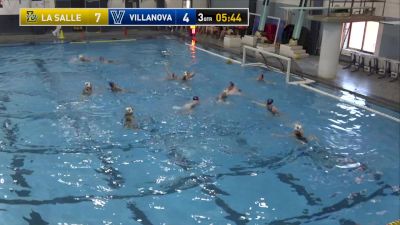 Replay: Le Salle vs Villanova - WWP - 2024 La Salle vs Villanova | Apr 7 @ 3 PM
Replay: Le Salle vs Villanova - WWP - 2024 La Salle vs Villanova | Apr 7 @ 3 PMApr 7, 2024
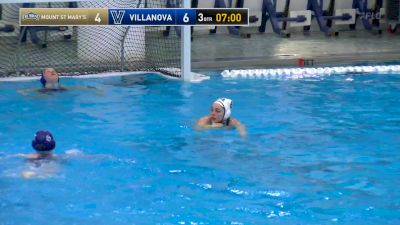 Replay: Mount St. Mary's vs Villanova - WWP - 2024 Mount St. Mary's vs Villanova | Apr 6 @ 7 PM
Replay: Mount St. Mary's vs Villanova - WWP - 2024 Mount St. Mary's vs Villanova | Apr 6 @ 7 PMApr 7, 2024
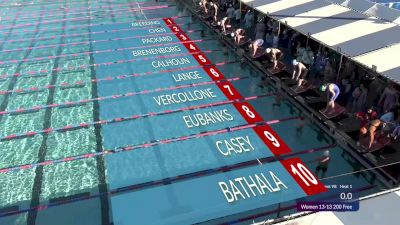 Replay: Finals - 2024 ISCA East Coast Elite Showcase | Apr 6 @ 4 PM
Replay: Finals - 2024 ISCA East Coast Elite Showcase | Apr 6 @ 4 PMApr 7, 2024
 Replay: Prelims Locker Side - 2024 ISCA East Coast Elite Showcase | Apr 6 @ 8 AM
Replay: Prelims Locker Side - 2024 ISCA East Coast Elite Showcase | Apr 6 @ 8 AMApr 6, 2024
 Replay: VMI vs Villanova - WWP - 2024 VMI vs Villanova | Apr 6 @ 11 AM
Replay: VMI vs Villanova - WWP - 2024 VMI vs Villanova | Apr 6 @ 11 AMApr 6, 2024
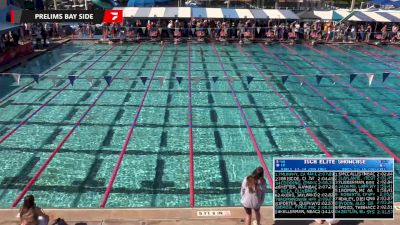 Replay: Prelims Bay Side - 2024 ISCA East Coast Elite Showcase | Apr 6 @ 9 AM
Replay: Prelims Bay Side - 2024 ISCA East Coast Elite Showcase | Apr 6 @ 9 AMApr 6, 2024
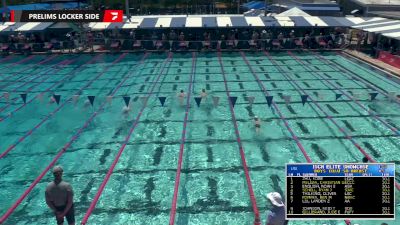 Replay: Prelims Locker Side - 2024 ISCA East Coast Elite Showcase | Apr 5 @ 8 AM
Replay: Prelims Locker Side - 2024 ISCA East Coast Elite Showcase | Apr 5 @ 8 AMApr 6, 2024
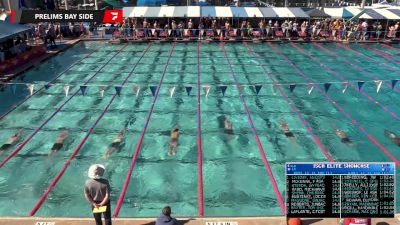 Replay: Prelims Bay Side - 2024 ISCA East Coast Elite Showcase | Apr 5 @ 8 AM
Replay: Prelims Bay Side - 2024 ISCA East Coast Elite Showcase | Apr 5 @ 8 AMApr 5, 2024
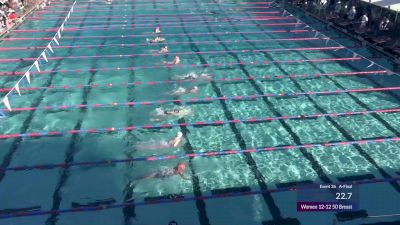 Replay: Finals - 2024 ISCA East Coast Elite Showcase | Apr 4 @ 4 PM
Replay: Finals - 2024 ISCA East Coast Elite Showcase | Apr 4 @ 4 PMApr 5, 2024